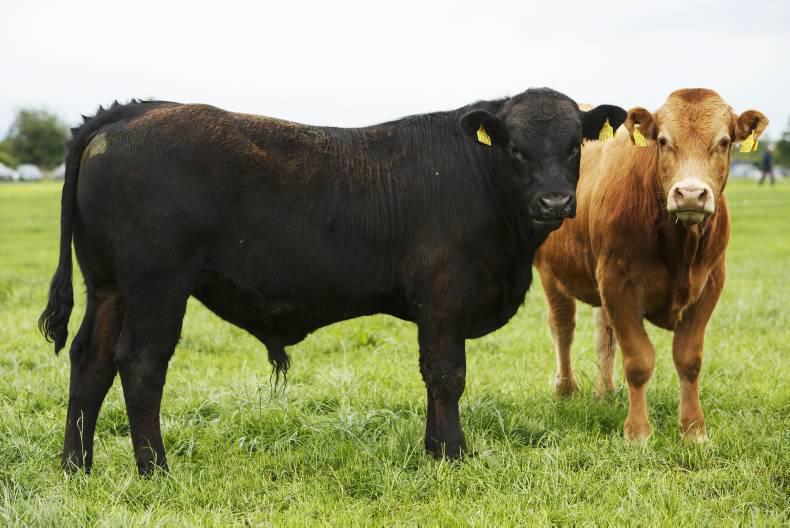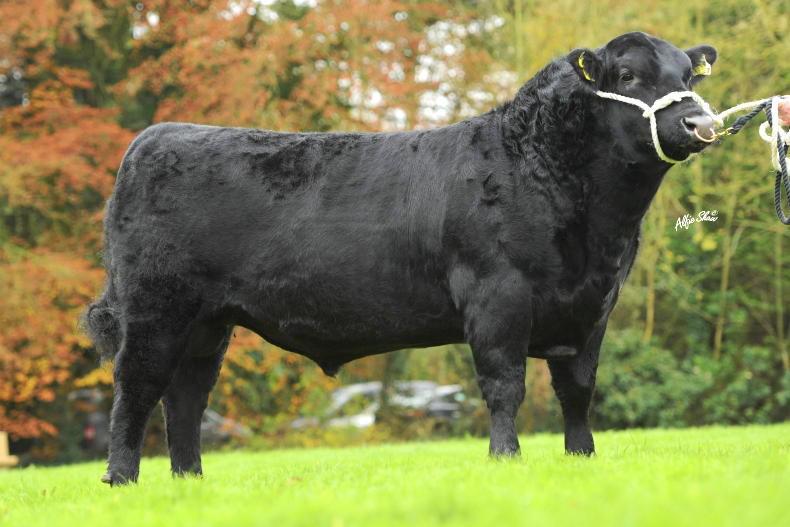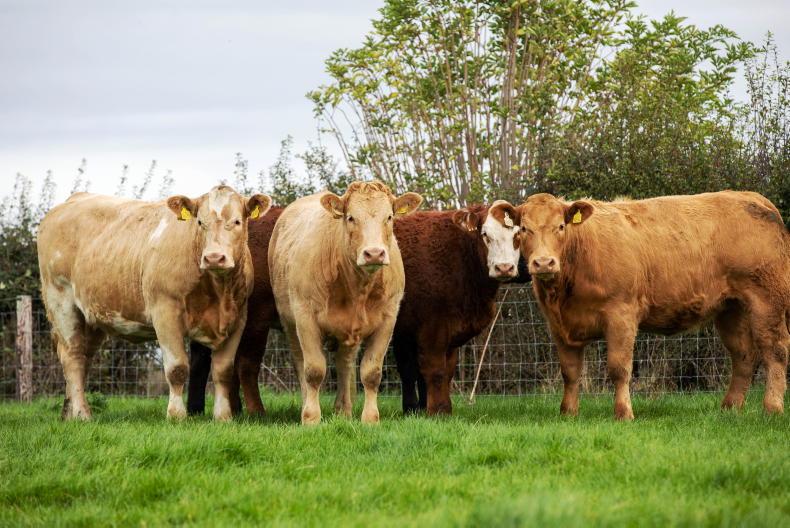The Replacement Index value of progeny is calculated on the parent average of a dam and sire, as demonstrated in Figure 1. As touched upon in demo 1, this calculation is taken at a given point in time and could change. The greatest risk of values fluctuating stems from using new or unproven sires with low reliability.

The ICBF explains the way the system works is that all pedigree beef bulls when born start out with a predicted figure as to how they will breed based on their parents’ figures. This is called a “parent average”.
As data is recorded on them (weights, body measurements (linear scores), feed efficiency, etc), their own figures change to reflect this data and the reliability percentage increases slightly. Then when the bull sires calves and they have data recorded on them, the bull’s figures change again and the reliability percentage goes up again.
The more progeny that a bull has data recorded on, the more the bull’s parents’ figures are fading out of the equation. By the time a highly used AI sire reaches 90% reliability, his parents’ evaluation figures will have little or no effect.
ICBF advises farmers when selecting sires and dams for breeding four- and five-star progeny to aim for a parent average in excess of €71 to allow for some fluctuations in the index. The optimum target is seen as at least a five-star value.
Care should also be taken with the reliability figures. For example, if using a cow with a lower replacement index of three stars or lower, it is useful to select a sire with high reliability to give the best chance of progeny that will retain a higher index. If using a test bull with low reliability it is recommended to use with caution to reduce the risk of progeny values falling as more production data comes on stream.
However, an advantage of using a young or test bull is accessing the best new genetics. The best way of using test bulls while at the same time guarding against a possible reduction is to use a team of bulls if using AI. For example, instead of using 15 straws from one sire, use five straws from three or four different bulls.
Top tips
The following are some tips to keep in mind when making breeding decisionsDon’t put too much focus on stars – remember an animal’s physical characteristics are also a vital component in making breeding decisions. Target cows with good maternal traits to breed female progeny from.Select animals that best suit your system – there is as much variation within breed as across breeds meaning there are animals in every breed that will meet BDGP requirements.If you have one- or two-star cows that you are happy with, there is no need to get rid of them. Use these animals as you currently are as typically 75% of the cows in the herd will change over the five years of the programme. If you want to get a replacement out of these lower value cows, remember there are sires in each breed with a high €uro-Star rating. Target using a sire with a high reliability so that there is not as much risk of figures fluctuating with genotyping or as more information comes on stream. Read more
Tullamore demo 1: BDGP requirement 4 and replacement strategy
Tullamore demo 3: Purchasing replacements – what to look out for
Information sheets from all Tullamore show demonstrations
The Replacement Index value of progeny is calculated on the parent average of a dam and sire, as demonstrated in Figure 1. As touched upon in demo 1, this calculation is taken at a given point in time and could change. The greatest risk of values fluctuating stems from using new or unproven sires with low reliability.

The ICBF explains the way the system works is that all pedigree beef bulls when born start out with a predicted figure as to how they will breed based on their parents’ figures. This is called a “parent average”.
As data is recorded on them (weights, body measurements (linear scores), feed efficiency, etc), their own figures change to reflect this data and the reliability percentage increases slightly. Then when the bull sires calves and they have data recorded on them, the bull’s figures change again and the reliability percentage goes up again.
The more progeny that a bull has data recorded on, the more the bull’s parents’ figures are fading out of the equation. By the time a highly used AI sire reaches 90% reliability, his parents’ evaluation figures will have little or no effect.
ICBF advises farmers when selecting sires and dams for breeding four- and five-star progeny to aim for a parent average in excess of €71 to allow for some fluctuations in the index. The optimum target is seen as at least a five-star value.
Care should also be taken with the reliability figures. For example, if using a cow with a lower replacement index of three stars or lower, it is useful to select a sire with high reliability to give the best chance of progeny that will retain a higher index. If using a test bull with low reliability it is recommended to use with caution to reduce the risk of progeny values falling as more production data comes on stream.
However, an advantage of using a young or test bull is accessing the best new genetics. The best way of using test bulls while at the same time guarding against a possible reduction is to use a team of bulls if using AI. For example, instead of using 15 straws from one sire, use five straws from three or four different bulls.
Top tips
The following are some tips to keep in mind when making breeding decisionsDon’t put too much focus on stars – remember an animal’s physical characteristics are also a vital component in making breeding decisions. Target cows with good maternal traits to breed female progeny from.Select animals that best suit your system – there is as much variation within breed as across breeds meaning there are animals in every breed that will meet BDGP requirements.If you have one- or two-star cows that you are happy with, there is no need to get rid of them. Use these animals as you currently are as typically 75% of the cows in the herd will change over the five years of the programme. If you want to get a replacement out of these lower value cows, remember there are sires in each breed with a high €uro-Star rating. Target using a sire with a high reliability so that there is not as much risk of figures fluctuating with genotyping or as more information comes on stream. Read more
Tullamore demo 1: BDGP requirement 4 and replacement strategy
Tullamore demo 3: Purchasing replacements – what to look out for
Information sheets from all Tullamore show demonstrations










SHARING OPTIONS